Listed: Who shot/staged/fictionalised JFK? | reviews, news & interviews
Listed: Who shot/staged/fictionalised JFK?
Listed: Who shot/staged/fictionalised JFK?
To mark the 50th anniversary, we count the cultural responses to Kennedy's assassination
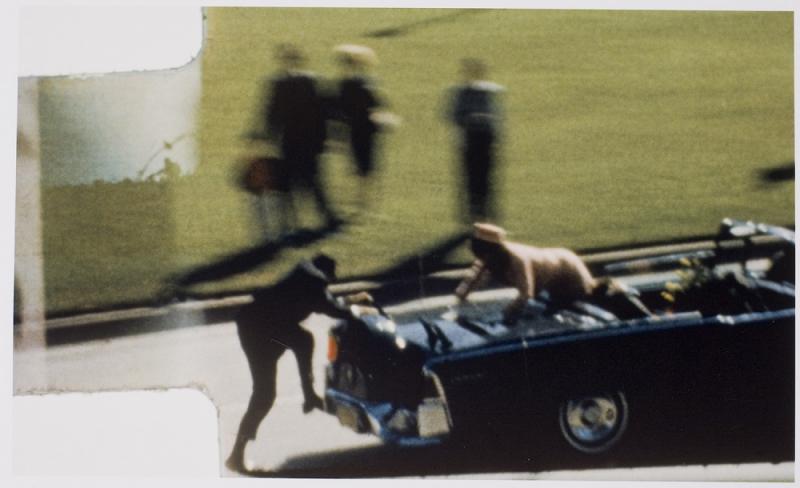
On 22 November 1963 President John F Kennedy was shot, yoking his name to an ex-marine and sometime defector to the USSR called Lee Harvey Oswald. Everyone old enough to remember is said to know where they were when they heard. As America dealt with its trauma, the conspiracy theories started,and spawned well over 1,000 books. The assassination also became the focus for artists in all art forms - in literature, theatre, film and even music.
SCREEN
JFK (1991)
Oliver Stone is the conspiracy theorist's conspiracy theorist, reflecting the jumble of bizarre coincidences and characters assembling in Dallas in November 1963 in dizzying patchwork edits of newsreel and crazed fabulation. Kevin Costner’s improbably noble Texas DA Jim Garrison is the still centre. Jack Lemmon, Walter Matthau, Joe Pesci, Kevin Bacon, Donald Sutherland as a Deep Throat-style spook and Gary Oldman as poor patsy Lee Harvey are the luridly colourful cast spinning round him, jabbering indistinguishable versions of the truth. Nick Hasted
The X-Files (1996)
 It would have been remiss of a TV series based on government conspiracies not to address one of the first, but fourth season episode Musings of a Cigarette Smoking Man was apocryphal even within that paranoid tapestry. There's little that the episode's titular character - and the series' main villain - doesn't have pinned on him by the end of the hour, but the Kennedy assassination is his entry point to the world of shadow government. In a beautifully choreographed scene a young, not-yet-smoking man (Chris Owens, who would return as the character's son in later episodes) hides out in a storm drain to commit the fatal deed while Lee Harvey Oswald wrestles with a malfunctioning vending machine. At least it gave David Duchovny and Gillian Anderson the week off. Lisa-Marie Ferla
It would have been remiss of a TV series based on government conspiracies not to address one of the first, but fourth season episode Musings of a Cigarette Smoking Man was apocryphal even within that paranoid tapestry. There's little that the episode's titular character - and the series' main villain - doesn't have pinned on him by the end of the hour, but the Kennedy assassination is his entry point to the world of shadow government. In a beautifully choreographed scene a young, not-yet-smoking man (Chris Owens, who would return as the character's son in later episodes) hides out in a storm drain to commit the fatal deed while Lee Harvey Oswald wrestles with a malfunctioning vending machine. At least it gave David Duchovny and Gillian Anderson the week off. Lisa-Marie Ferla
The Kennedys (2012)
This History Channel miniseries caused a huge rumpus in the States even before it was broadcast, but anything about the controversial, star-crossed Kennedys tends to produce that effect. In retrospect it's difficult to see what all the fuss was about. True, Tom Wilkinson's performance as patriarch Joe Kennedy depicted him as a brutal power-monger, philanderer and a would-be appeaser of Adolf Hitler, but hey, he was. Greg Kinnear looked and sounded very much like JFK, while Katie Holmes did an unexpectedly good job as his wife Jackie. So it was lurid and soapish... but so are the Kennedys. Adam Sweeting
Parkland (2013)
Parkland Memorial Hospital is the place where both JFK and Lee Harvey Oswald died and the setting for the most recent film to investigate the assassination of the 35th president. Former journalist Peter Landesman approaches this much pored-over incident with a fresh perspective by putting the doctor who operated on the president, the man who filmed the footage of the assassination and the brother of Lee Harvey Oswald under the microscope in a bid to quash conspiracy theories and give a voice to those who were caught up in this intense and surreal moment in history. Katherine McLaughlin
STAGE
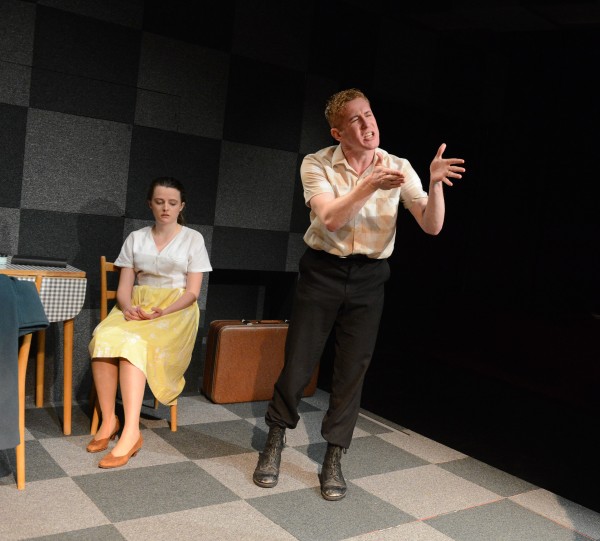 Lee Harvey Oswald by Michael Hastings (1965)
Lee Harvey Oswald by Michael Hastings (1965)
Did he or didn’t he? Adding to the stockpile of speculation and conspiracy theorists, British playwright Michael Hastings’ Lee Harvey Oswald, written three years after the assassination, clearly believes "he didn’t do it". Indeed couldn’t possibly have done it either physically or temperamentally. The portrait of an assassin as an emotionally vulnerable, volatile young American at odds with his system, the play raises more questions than it answers with its testimony to the Warren Commission set alongisde Oswald's troubled relationships with wife and mother. Like looking through broken glass, scattered shards of history. (Pictured, the current revival at the Finborough Theatre.) Carole Woddis
 Kennedy's Children by Robert Patrick (1973)
Kennedy's Children by Robert Patrick (1973)
A smoke-filled lower Manhattan bar brings together the dashed dreams of a generation in American dramatist Robert Patrick’s monologue-driven play, which was seen at London’s King’s Head before its 1975 Broadway premiere, which won a Tony for luminous co-star, Shirley Knight (pictured, original 1973 cast at Studio Theater, New York). To this day I can still hear the play's closing lament: “They all loved him – all but one.” Patrick’s governing structure and conceit fuelled a subsequent work, Blair’s Children, seen at London’s Cockpit Theatre earlier this year, though the two aren't actually all that analogous -- at this point, no one is mourning Tony Blair’s death. Matt Wolf
Assassins by Stephen Sondheim (1990)
A musical about the death of JFK... Really? No: Sondheim’s Assassins, an audacious cross between a shooting gallery and a rogues gallery, is a riveting examination of the motives and resonances of nine people who attempted to assassinate their President. In this nightmare version of the American Dream, John Wilkes Booth (who assassinated Lincoln) persuades Lee Harvey Oswald in the Texas School Book Depository to pull the trigger. For Sam Mendes’ UK premiere, Sondheim added a song catching stunned reactions to JFK’s murder, “Something Just Broke”. Assassins is one of Sondheim’s most arresting but rarely revived works. When the masterly 2005 Broadway production closed just after winning five Tonys, Sondheim said, “I am much more upset about this production closing than any I can recall.” David Benedict
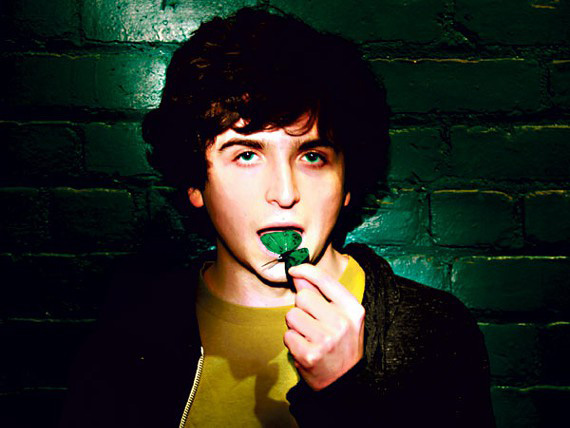 Mercury Fur by Philip Ridley (2005)
Mercury Fur by Philip Ridley (2005)
In polymath Philip Ridley’s shocking 2005 stage play, Mercury Fur, set in a dystopian future, there’s a scene in which two young teens, Darren and Naz, talk about a new drug that comes in the shape of butterflies. It’s so strong that anyone who takes it hallucinates an experience dictated by the colour of the butterfly. The “red with silver stripes” makes you feel part of a political assassination. Darren tells Naz about how, when he took one, he was at the shooting of “Dallas splat-head Kennedy”. The drug made him feel as if he was “the Camelot girl wearing this pink dress” in the car with the president. JFK’s death gives her an orgasm. Aleks Sierz
LITERATURE
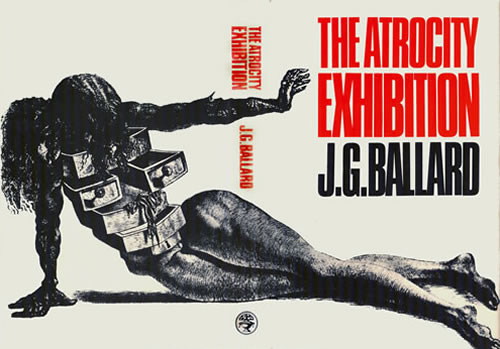 The Assassination Of John Fitzgerald Kennedy Considered As A Downhill Motor Race by J. G. Ballard (1969)
The Assassination Of John Fitzgerald Kennedy Considered As A Downhill Motor Race by J. G. Ballard (1969)
Inspired by French surrealist Alfred Jarry's "The Crucifixion Considered As An Uphill Bicycle Race", Britain's finest science fiction writer retooled Kennedy's assassination as a droll car race commentary on the chaos and conspiracy theories: "It is believed that the first shot was not properly heard by all the drivers. In the following confusion, Oswald fired the gun two more times, but the race was already underway." The story can be found in Ballard's iconic experimental novel The Atrocity Exhibition. Simon Munk
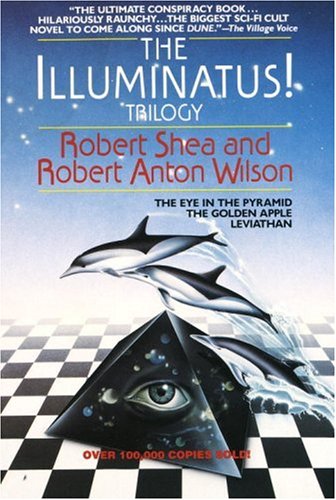 The Illuminatus! Trilogy, by Robert Shea and Robert Anton Wilson (1975)
The Illuminatus! Trilogy, by Robert Shea and Robert Anton Wilson (1975)
One of the most preposterous of all counterculture documents, The Illuminatus! Trilogy is a sprawling druggy shaggy dog story of secret societies, sex magic, gold submarines, gods, Nazis and fnords that has, for better or worse, had a vast effect on popular culture ever since. The JFK assassination - as symbol of doubt and mistrust in accepted historical narratives - lies at the heart of it, although in this version there are FIVE would-be assassins: Oswald in the book depository, the monstrous Harry Coin at the sewer at the Triple Underpass, a mafia gunman on the roof of a nearby restaurant, one of five John Dillinger clones on the Grassy Knoll, and a man behind him named Harold Canvera, who actually shot the fatal shots. Motive? Kennedy's enthusiasm for space exploration made shares in a space technology company shoot up in price, just after Canvera had offloaded the seemingly worthless shares he'd inherited. It makes sense in context, sort of, maybe, if you catch it in the right light... Joe Muggs
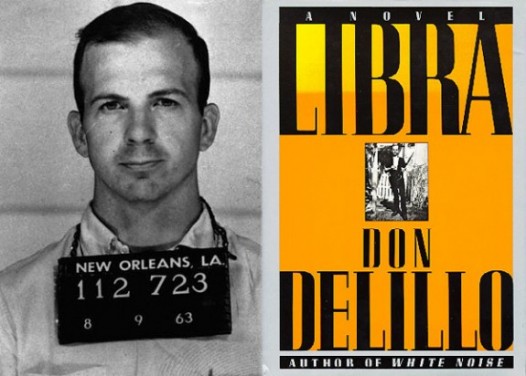 Libra by Don DeLillo (1988)
Libra by Don DeLillo (1988)
DeLillo's stew of disgruntled ex-CIA operatives and Lee Oswald fictionalises the events and characters behind the assassination to tell a story about conspiracies, history and the nature of causation. "Plots carry their own logic. There is a tendency of plots to move toward death." DeLillo's book was in turn the inspiration for James Ellroy's American Tabloid which also chronicled the characters behind Kennedy and the assassination. Simon Munk
 American Tabloid by James Ellroy (1995)
American Tabloid by James Ellroy (1995)
Crime writer James Ellroy presses the reader’s nose to the glass in this semi-fictionalised chronicle of the chicanery surrounding J Edgar Hoover and the Kennedys during 1958-63. The prose, like the subject matter, is up close and personal, not so much hard-boiled as kiln-baked. But it was TIME Magazine’s novel of the year in 1995, and Ellroy’s treatment of the JFK assassination has, despite the eye-balling style, an unusual (and quite un-tabloid) breadth. “It’s time to embrace bad men and the price they paid to secretly define their time,” Ellroy says. Hold your nose and prepare to be dazzled. Matthew Wright
Shade: The Changing Man - The American Scream by Peter Milligan and Chris Bachalo (1990s)
In early issues of his cult DC comic book, Shade: The Changing Man, former 2000 AD writer Peter Milligan applied his psychedelic eye to Nineties America with the story of an inter-dimensional traveller who has harnessed the power of madness, on a mission to stop The American Scream - a supernatural force conjured by the country's fractured psyche. A huge, Sphinx-like bust of JFK erupts from the centre of Dealy Plaza and devours anyone unable to answer, "Who Shot JFK?". Milligan suggests that Kennedy was a sort of pagan god-king - raised up and exulted by his subjects but then inevitably killed by them as a ritual sacrifice. Who shot JFK? America did. Stuart Houghton

Oswald's Tale, by Norman Mailer (1995)
This exhaustively researched, enormous “non-fiction novel” brought Oswald back to life. Mailer used secret KGB tapes and an accumulation of banal detail to recreate Lee Harvey’s previously obscure years in Minsk, his gloomy marriage there, and dreams of political grandeur. Mailer’s “sad tale of a young American who lived abroad and returned to a grave in Texas” also made him the first major writer since the Sixties to conclude that this newly human anti-hero was the lone assassin, after all. (Below, Mailer interviewed about the book) Nick Hasted
11.22.63, by Stephen King
King takes Mailer’s lead, and pins JFK’s murder on Oswald, with the twist that a fourth-dimension wormhole in a small-town burger joint can fling teacher Jake Epping back to 1958, where he’ll have five years to save the President. King loathes demonic American “fame junkie” Oswald, but loves rebuilding the innocent if viciously racist America of his childhood, which ended with JFK. A desperate Assassination Day chase to reverse the past, with Time itself fighting back, is thrilling, and the end result movingly strange. Nick Hasted
ART
 Woman with Umbrella by Gerhard Richter (1964)
Woman with Umbrella by Gerhard Richter (1964)
Warhol produced several silkscreen images of Jackie Kennedy after her husband’s assassination, from photographs taken some time before and some time soon after her husband’s death. In his series of images which show her at the funeral, Jackie’s beautiful impassive face suggests the rendering of an icon. And not only this: the way the image is repeated in Warhol’s iconography has a deliberately deadening effect on our emotions. Gerhard Richter’s painting (pictured right) is very different, and it is altogether more powerful. Here she is gasping back tears, with one hand gripping an umbrella, the other clamped across her mouth. But the title does not identify its subject. The grieving First Lady in Woman with Umbrella portrays a seemingly ordinary, anonymous woman, and Richter’s characteristic blurring has a double effect: it completely detaches us from the immediacy of the scene (in fact, all context is removed and her figure is shown in relief against a black backdrop) as it creates a universal image of shock and mourning. Like us, she appears as a powerless bystander as the events of history unfold. Fisun Güner
MUSIC
Adagio for Strings by Samuel Barber
Admirers have dubbed it "the saddest piece of music ever", yet Barber wrote it - in its original form as the slow movement of a string quartet - in 1936 as a lovesong to his partner, fellow student and composer Gian Carlo Menotti. It first become a presidential funeral dirge for Franklin D Roosevelt, but at least it had more validity for Kennedy, who declared it one of his favourite pieces of music. Following a televised tribute after the assassination, Jackie had a performance given by the National Symphony Orchestra of Washington on the Monday after JFK's death which was duly broadcast. David Nice
Elegy for JFK by Igor Stravinsky (1964)
It took him only two days to write, but then the verses he had requested from his good friend W H Auden turned out to be little more than a haiku. "I'm an old hand at doing this sort of thing," Auden told Stravinsky, who claimed that the poet was interested much less in the subject than in the form. He, too, was writing plenty of memorials in the last, twelve-tone phase of his creative life: other dedicatees included Dylan Thomas (a more substantial work), Dufy and T S Eliot. This short elegy lasts less than three minutes and the vocal line - which Stravinsky is believed to have composed first before deciding on what instrumentation would support it - is complemented by three clarinets. The great Cathy Berberian makes total sense of the awkward setting in this Rome performance conducted by Boulez. David Nice
“November 22nd 1963” by Destroy All Monsters (1979)
Climaxing with singer Niagara pleading “Jackie, Jackie hold on to his brains”, Destroy All Monsters’s 1979 single wasn’t subtle. But it was a powerful evocation of the turmoil surrounding the JFK assassination. The art-rock band formed in Michigan in 1973 as a multi-media project and by 1979 included luminaries Ron Asheton (ex-Stooges) and Michael Davis (ex-MC5). Both are now deceased, and the song is as much testament to them as the band’s spirit of adventure. Kieron Tyler
Funeral March, Beethoven's Symphony No 3, Boston Symphony Orchestra (22 November 1963)
The swiftest artistic response of all was perhaps in Boston, where concert-goers were given the news by the Boston Symphony Orchestra conductor Erich Leinsdorf. The gasps of the audience still chill the marrow. The announced programme was interrupted while the orchestra performed the Funeral March from Beethoven's third symphony. It was presumably not easy to play or to listen. Jasper Rees
Share this article
The future of Arts Journalism
You can stop theartsdesk.com closing!
We urgently need financing to survive. Our fundraising drive has thus far raised £49,000 but we need to reach £100,000 or we will be forced to close. Please contribute here: https://gofund.me/c3f6033d
And if you can forward this information to anyone who might assist, we’d be grateful.

Subscribe to theartsdesk.com
Thank you for continuing to read our work on theartsdesk.com. For unlimited access to every article in its entirety, including our archive of more than 15,000 pieces, we're asking for £5 per month or £40 per year. We feel it's a very good deal, and hope you do too.
To take a subscription now simply click here.
And if you're looking for that extra gift for a friend or family member, why not treat them to a theartsdesk.com gift subscription?


Add comment